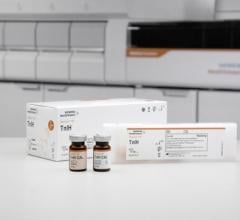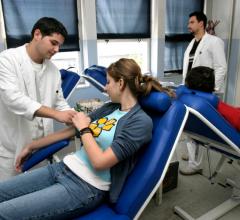
September 25, 2013 — Researchers have determined that fingerstick cardiac troponin I assay testing using the point-of-care i-STAT device is not accurate enough to determine the exact troponin level without the application of a corrective term.
The study was funded by the department of emergency medicine, Loyola University Medical Center and was published in the American Journal of Emergency Medicine. The study was conducted by Devin Loewenstein, BS, Christine Stake, MA and Mark Cichon, DO of Loyola University Chicago, department of emergency medicine.
“Cardiac troponin assays commonly exceed one hour while point-of-care testing can be completed in minutes by basic life support personnel,” said Cichon, who is chair of the emergency medicine department at Loyola. “When patients present complaining of chest pain, time can be critical to achieving positive outcomes, so Loyola was very keen to test this timesaving process.” Currently Loyola is the only academic medical center in Chicago to utilize the i-STAT device.
Conducted in the Loyola Level 1 trauma center emergency department from June to August 2011, fingerstick blood samples were collected from consenting patients for whom standard-of-care venipuncture POC troponin (POCT) testing had been ordered as part of their workup. Cardiac tropnin (cTnl) assays were performed using the i-STAT I device.
Eighty-nine cTnl levels were measured by both fingerstick and standard venipuncture. “While fingerstick testing was not accurate enough to solely determine the exact troponin level, it is accurate in qualifying tropnonin levels as negative, borderline or positive which is clinical information that may guide critical decision making,” said Cichon, who is on the board of directors of the Illinois College of Emergency Physicians (ICEP).
Cichon has served as division director for Loyola Emergency Medicine for the past 16 years. He has instituted several innovative programs to improve care for critically ill patients, including the heart attack rapid response team, telemedicine stroke program, sepsis blood infection program and hypothermia program.
For more information: www.newswise.com/institutions/newsroom/225/


 October 09, 2019
October 09, 2019 








